The Scots magician who inspired the great Houdini
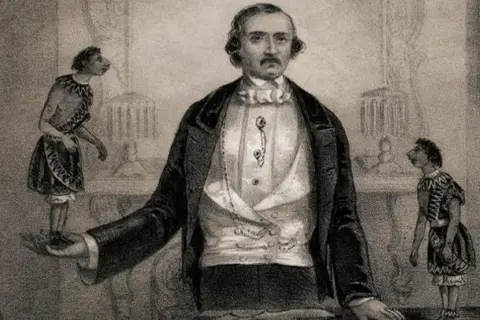 Apic/Getty Images
Apic/Getty ImagesMagician John Henry Anderson died in 1874, the same year Harry Houdini was born - yet despite the two never meeting, Anderson was reputedly among the legendary escapologist's greatest inspirations.
Anderson - who was born in 1814 in Aberdeenshire's Kincardine O'Neil area - is thought to have been among the first magicians to pull a live rabbit out of a top hat.
He became known as "The Great Wizard of the North" as his status grew around the world.
After Anderson's death, famed illusionist Houdini travelled to Aberdeen, visited his fellow entertainer's grave, and even started to pay for its upkeep.
As the 100th anniversary of the Aberdeen Magical Society approaches, Anderson's story is being retold for a new generation.
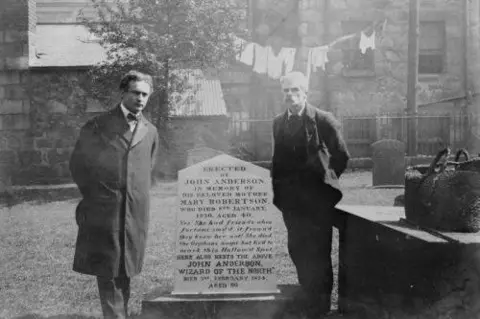 Unknown
UnknownAberdeen and the north east of Scotland are famed for such things as the oil and gas industry, the Northern Lights, and the humble local food delicacy the buttery.
The area's links to the world of magic, however, are far less well known.
John Henry Anderson became one of the biggest names in the entertainment world in the mid 19th Century.
As a boy, he had joined a travelling theatre company.
It is not known who introduced him to magic or indeed taught him.
But as his expertise grew he ultimately took his act to audiences around the world.
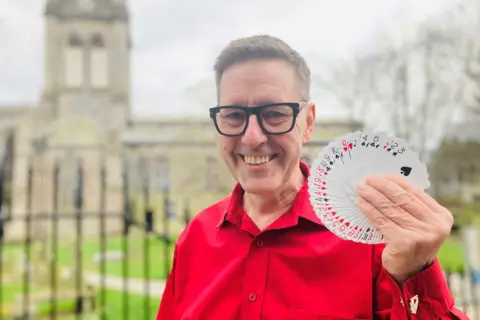
Dave Goulding is a magic historian, escapologist, and Aberdeen Magical Society's vice-president.
"He was the most famous variety act in the UK for a while," he told BBC Scotland News of Anderson.
"He took magic off the streets and legitimised it."
Anderson opened a theatre in Glasgow, but it was later destroyed by fire.
He would then travel as far as Australia in the 1860s, and even performed for Queen Victoria.
Anderson was seen as a confident self-publicist.
"He realised more people were getting literate, which was then good for publicity," Dave said.
"He used to do daft things, such as using reverse moulds on butter to leave beautiful designs."
Anderson died the same year Houdini was born, but Dave said Houdini was inspired by him "through his reputation" in the years that followed.
Dave explained: "He was a great showman.
"This was an idea Houdini liked - a lot of his tricks were for publicity, he was selling his shows."
Anderson died at the age of 60.
Who was Harry Houdini?
Harry Houdini - his professional name - was born as Erik Weisz in Budapest in 1874.
He found fame thanks to his extraordinary escapes.
These included freeing himself from chains, ropes, and straitjackets under water.
His name is still renowned to this day, far beyond just magic circles.
Last year's Glastonbury music festival headliner Dua Lipa had a recent track titled Houdini.
It features the lyric: "Catch me or I go Houdini".
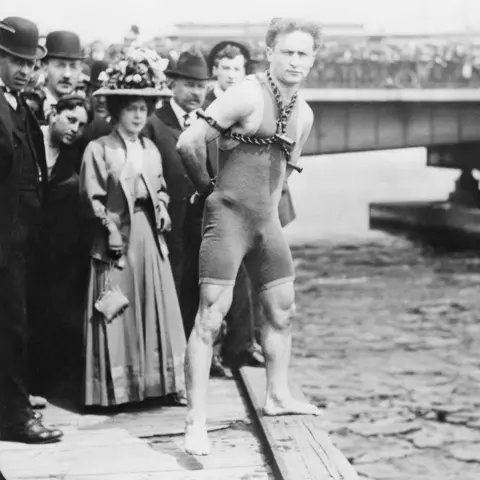 Bettmann/Getty Images
Bettmann/Getty ImagesIn the early 1900s, Houdini made his one and only visit to Aberdeen to perform.
While in the so-called Granite City, he took the chance to visit John Henry Anderson's grave in St Nicholas Kirkyard, and was photographed next to it.
He decided to fund its upkeep.
Houdini died in 1926 at the age of 52.
The grave in Aberdeen still stands to this day.
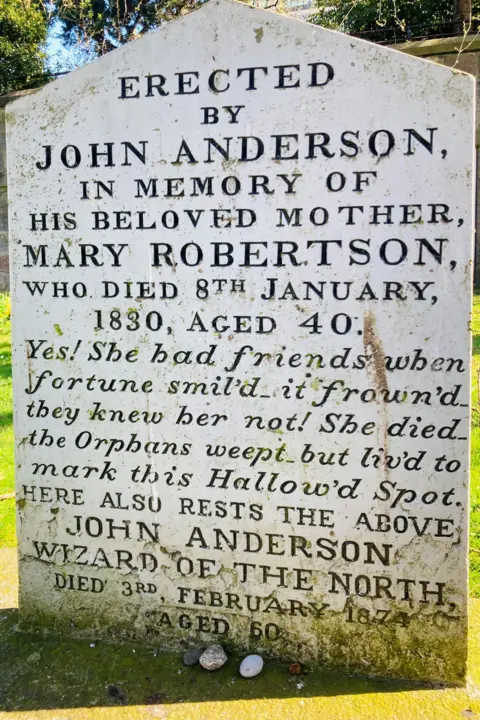
Dave Goulding said Anderson's grave is far from forgotten.
"I give it a tidy now and again," he said.
"We get American magicians coming over and they want to see Anderson's grave, as he is still known.
"Magicians know each other throughout the world."
Do you have any magic artefacts?
Aberdeen Magical Society was founded in 1926, coincidentally the same year Houdini died.
With its centenary approaching next year, special events are being planned, including an exhibition.
The society is appealing for historic magic artefacts that it could borrow and feature.
"Aberdeen and the north east are home to many magic luminaries that are known the world over," Dave said.
"As well as highlighting the celebrities, we want to make sure the upcoming exhibition tells the story of our society and its members, from 1926 to the present day.
"If anyone has any posters, programmes or other artefacts relating to the society, we would love to see them."
